Plaque lesions on the skin of the hands are the most common manifestations of scaly lichen. Hand psoriasis is a chronic disease that significantly impairs a person's quality of life. It has special symptoms, as well as many prerequisites for development.
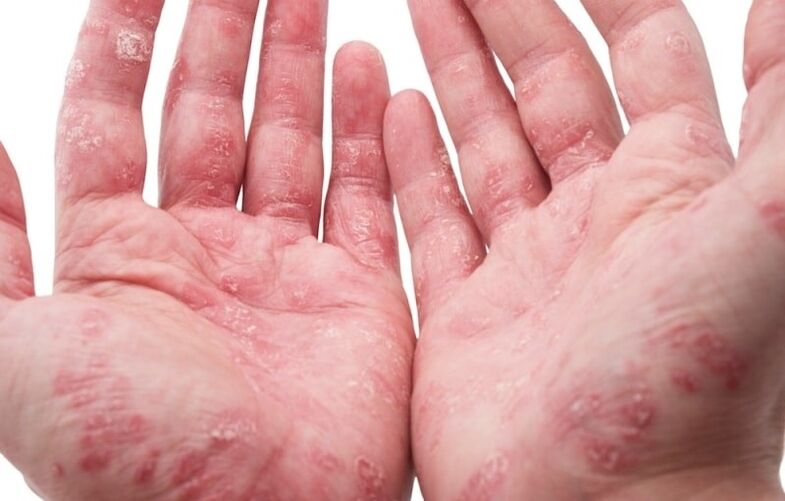
The causes of psoriasis on the hands
What causes a rash in the form of rough plaques on the palms and in the areas of flexion of the upper limbs? it is not always easy to understand right away. The main causes of psoriasis on the hands are:
- hereditary predisposition to disease;
- result of infectious, viral and colds;
- metabolic disorders and hormonal pathologies (diabetes mellitus);
- stressful situations, nervous breakdowns, emotional upheavals;
- frequent contact with aggressive chemicals (household chemicals, cosmetics);
- skin injuries (abrasions, wounds, abrasions, scratches).

People prone to allergic reactions are at risk of developing psoriatic psoriasis. In addition, malnutrition, alcohol and tobacco abuse, long-term use of antidepressants, steroid drugs can provoke scaly lichen.
Symptoms of manifestation
In adults, psoriasis begins in the elbows and hands. The first signs are seen on the extensor part, when small flat papules appear, which eventually increase in size, forming rough, round plaques of pale pink or red color. In addition, the rash appears on the palms. The skin becomes dry, thickened, acquires a deep red color and sometimes cracks.
The development of psoriasis on the fingers can reach the nails. Initially, insignificant pits form on them and over time the nail plate thickens, loosens and resembles a fungal infection. That's why people often wonder if scaly lichen is contagious? Psoriasis is a chronic disease that is not transmitted by shaking hands or other contact. The predisposition to the disease can be passed on genetically, but not the disease itself.
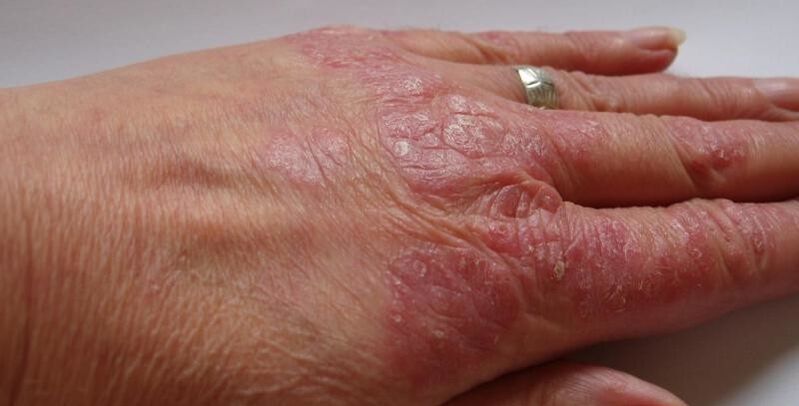
Another symptom of scaly lichen is the appearance of scales with scales between the fingers. The skin in these places looks like calluses, the same rough and rough.
Forms of psoriasis of the hands
The nature of the course and the clinical manifestations of scaly lichen are very diverse. The rash can affect not only the arms but also the shoulders, neck, chest, especially if the child suffers from the disease. Hand psoriasis is the most common type of dermatosis and can occur in several basic forms, described below.
Plaque or plain
The skin in the affected areas becomes thicker, covered with white crusts and cracks that sometimes bleed. The plaques coalesce into groups, forming large lesions.
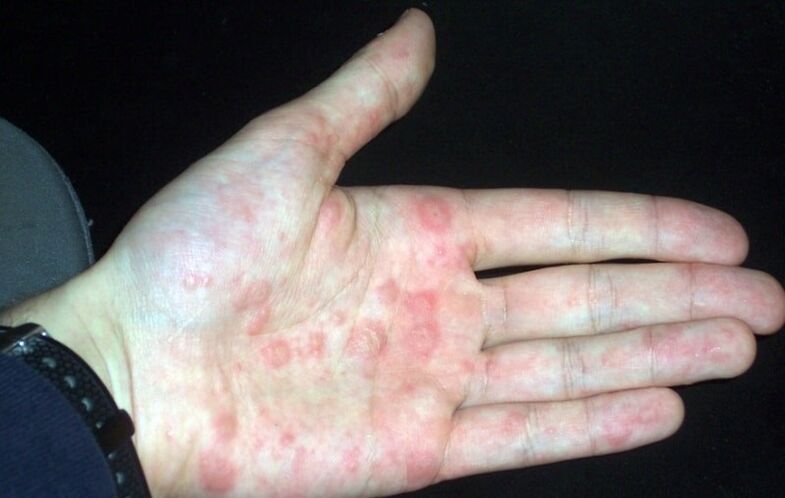
Tear shape
The rash most often affects the upper arms and shoulders. The plaques are densely covered with white scales and look like drops. This type of psoriasis spreads rapidly throughout the body, affecting the forearms and thighs. It is aggravated mainly after ingestion of streptococcus (cause of tonsillitis, tonsillitis, ARVI).

Exudative or pustular flat lichen
It is localized on the forearms, has a severe course - many blisters with clear fluid, purulent processes, as well as the appearance of the rash outside the upper extremities.
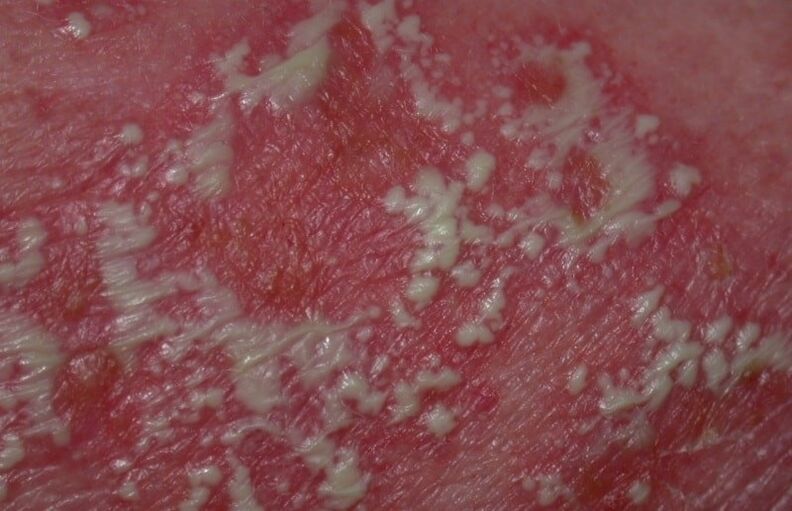
Nail psoriasis
This shape is characterized by the appearance of longitudinal or transverse lines with a white or gray tinge. The skin around the plate thickens, and the nail itself exfoliates and loosens, leading to its further destruction.
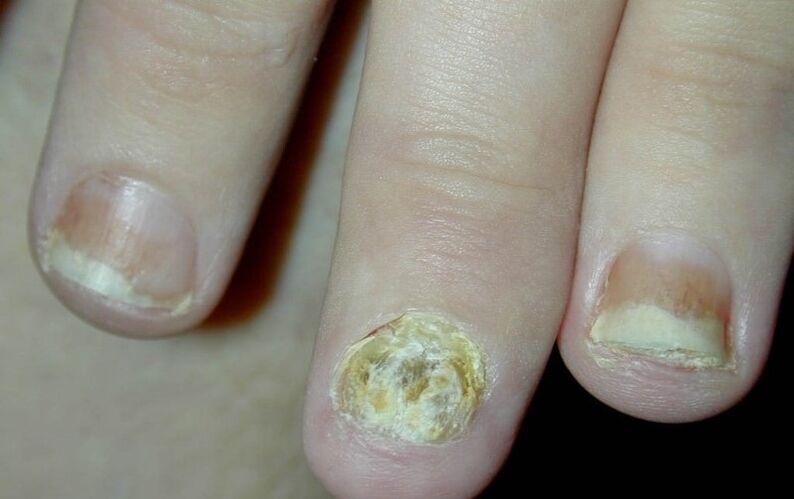
What each shape of scaly hands looks like is clearly visible in the photo.
If you do not start treatment for psoriasis on the hands in time, the disease can provoke inflammation of the joints (psoriatic arthritis). The rash can spread to other parts of the body (head, legs, back, abdomen, chest).
Stages of skin disease
Psoriasis is a chronic disease that has a specific sequence of development. Depending on the intensity of the disease and the frequency of relapses, there are 3 main stages of the disease:
- progressive - initial stage - the appearance of several scaly papules on the hands, shoulders, between the fingers and in the extension of the elbows, which are accompanied by swelling, inflammation, itching;
- stationary stage - no new rashes appear, and the old plaques are densely covered with white scales, the affected areas stop itching (the disease freezes in one place);
- stage of regression - the symptoms begin to disappear (papules fade, dry plaques dissolve, the skin is cleansed, leaving only minor dark spots).
In remission, psoriasis can last from 2-4 months to several years. New recurrences are more severe each time, leading to a gradual thickening and thickening of the stratum corneum of the hands, elbows, between the fingers and around the nail plates.
Pharmacy treatment
Scaly lichens, although not a contagious disease, bring a lot of discomfort and inconvenience. The main goal of drug treatment is to improve the general condition of the patient:
- removal of flaking and itching;
- relieving inflammation;
- soothe the skin.
Therapy should be comprehensive and include several different groups of drugs for external and internal use.
- Hormonal - relieve inflammation, irritation, swelling, itching and pain, reduce fluid papules in exudative psoriasis. In addition, ointments eliminate allergic manifestations.
- Non-hormonal - zinc ointment, salicylic ointment - relieve the main symptoms, do not cause side effects, act gently on the skin, but are less effective than glucocorticosteroid (hormonal) drugs.
- Homeopathic - used for severe flaking, itching, help in the period of joint damage.
Homeopathy is effective only if it is chosen correctly, taking into account all the nuances of the course of the disease and the characteristics of the patient's body.
In case of poor results of topical medications, the doctor may prescribe systemic therapy in the form of injections and pills. The drugs suppress the intensive division of skin cells, detoxify the body, thus eliminating the main symptoms, which helps to improve the quality of life.
In addition to the main drugs aimed at inhibiting psoriasis, complex therapy uses means to maintain the whole body:
- vitamins;
- drugs for liver maintenance - hepatoprotectors;
- sorbents - cleansing the intestines of toxins and poisons;
- antihistamines;
- immunomodulators.
The better to treat this or that form of psoriasis, the specialist will determine. It will combine medications to achieve maximum effect and not harm your body as a whole.

Folk remedies
Patients are often interested in how to cure psoriasis at home. Herbal preparations and healing baths help in the fight against scaly lichens on the hands. In addition, folk remedies help to strengthen the action of drugs and the transition of the disease to the stage of remission.
Baths with celandine
Pour the chopped grass (100 g) with 3 liters of boiling water and leave for 1-1, 5 hours. Pour the filtered liquid into a hot bath (37-40 degrees). The duration of one procedure is no more than 15 minutes.
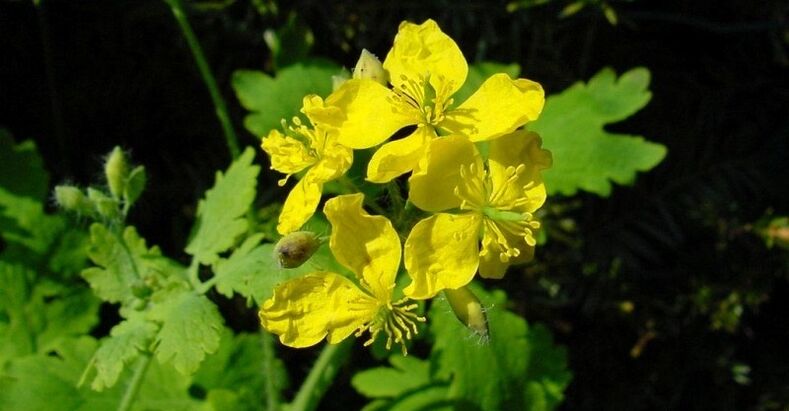
The course of treatment is 10-12 sessions, which can be held daily.
Herbal collection for water manipulation
It is necessary to mix in equal proportions (50 g each):
- St. John's Wort;
- sage;
- valerian root;
- celandine;
- inheritance.
Boil 30 g of the collection in 250 ml of water for 5 minutes. Boil the broth for 1, 5-2 hours, strain and add to a large bath.

Herbal baths alleviate the course of the disease, soothe the skin, reduce inflammation and flaking and, most importantly, stop the further spread of plaque.
Ointment with propolis
Melt 300 g butter, add 20 g chopped propolis, boil everything until it forms a consistency. Treat the affected areas on the hands with the prepared cooled ointment. The product is also suitable for compresses. Apply a small amount of medicine on a cotton swab, apply to injured areas, fix with a bandage.
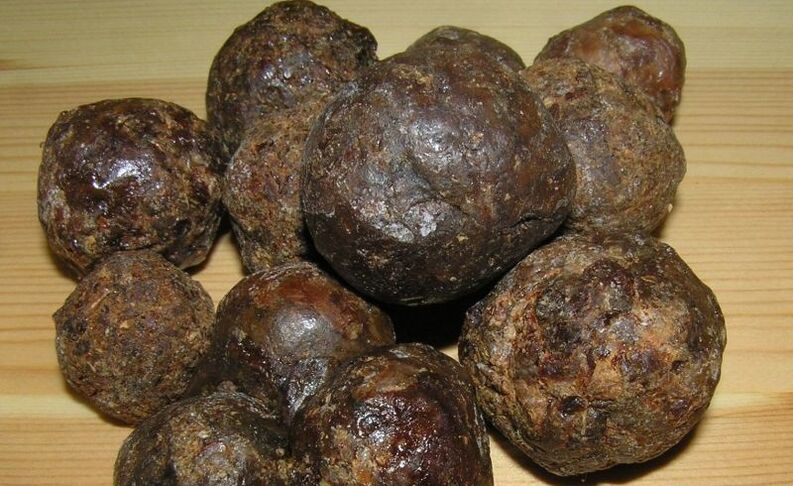
Before using the ointment, you should treat the plates with hydrogen peroxide and wait until they dry. This will enhance the effect of the folk remedy.
Birch tar
For 30-45 days you should lubricate the affected areas of the hands with birch tar. It is better to do this an hour before bedtime. The substance should remain on the skin for at least 10 minutes, after which it should be washed off with warm water. Gradually, the residence time of tar on the plates increases to 30 minutes.
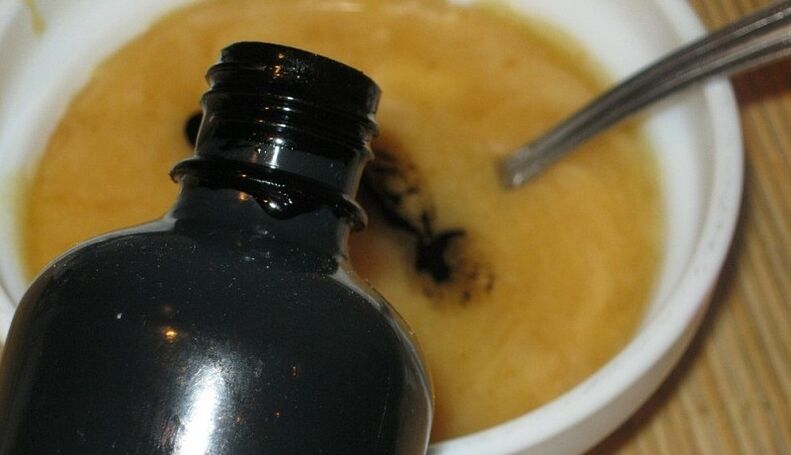
This drug is most effective in treating skin diseases. The folk remedy well eliminates unpleasant symptoms and prolongs the period of remission for a long time.
Prevention of psoriasis on the hands
Hands more often than other areas of the skin suffer from rashes. The disease is difficult to treat due to constant contact of the hands with provoking factors. To achieve long-term remission, it is important to adhere to preventive measures:
- do not allow the skin to dry;
- use household chemicals with gloves;
- use specially selected hand creams;
- avoid contact with aggressive substances;
- seek medical help immediately when the first rash appears;
- do not abuse alcohol and smoking.
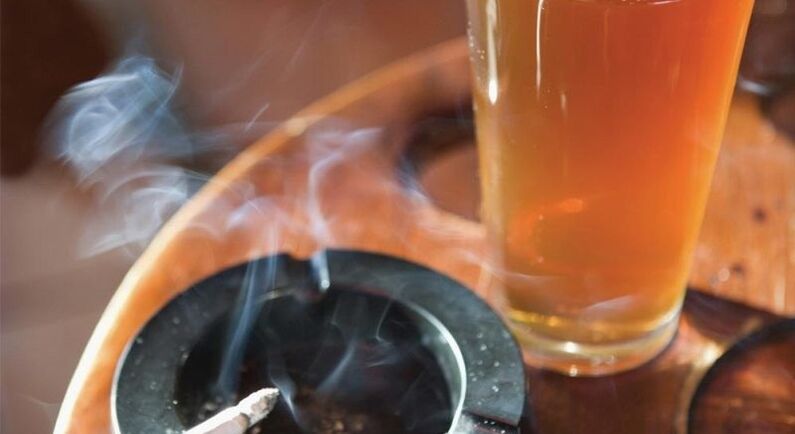
In the prevention of psoriasis of the hands should pay attention to proper nutrition. Fried, smoked, salty, fatty, spicy foods should be excluded from the diet. It is not recommended to indulge in chocolate and flour products. It is better to cook, steam or bake food and heat fruits and vegetables with red pigment (cherries, strawberries, tomatoes) for heat treatment.
Psoriatic rashes on the hands are prone to recurrence. The disease is not curable, but only temporarily goes into remission. The duration of the calm of psoriasis depends on proper treatment and prevention. Watch your lifestyle, follow your diet, avoid stress and treat the first signs of the disease in time.























